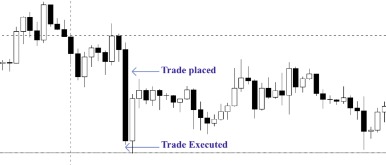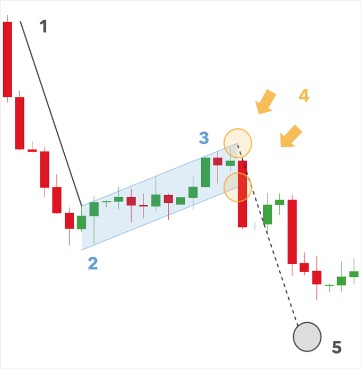Bullish Harami Candlestick Pattern Trading Strategy and Backtest Definition & Meaning

It is a bearish reversal pattern occurring at the top of an uptrend that has a 72% chance of accurately predicting a downtrend. As is true with other indicators, Harami patterns also need confirmation from other indicators. Here in this chart, e have made use of the Bolinger bands along with candlesticks. This candlestick pattern is opposite to the appearance of a bearish engulfing pattern. Though both the patterns indicate a potential bearish downtrend after a long uptrend. In this article, we’re going to have a closer look at the bullish harami pattern.
Like other candlestick patterns, the Harami can signal that a reversal may be at hand. This article will focus on these patterns and how to trade them. A Marubozu Candlestick pattern is a candlestick that has no “wicks” (no upper or lower shadow line). A green Marubozu candle occurs when the open price equals the low price and the closing price equals the high price and is considered very bullish. A red Marubozu candle indicates that sellers controlled the price from the opening bell to the close of the day so it is considered very bearish. The exit trade was taken at the last green candle when the high of the previous red candle was broken.
The bearish harami is a bearish reversal pattern that’s believed to signal a negative trend reversal. A bearish harami consists of two candles, where the first is bullish, and followed by a bearish candle which body is confined within the range of the previous candle. A bullish harami is a two-candle bullish reversal pattern that forms after a downtrend. The first candle is bearish, and is followed by a small bullish candle that’s contained within the real body of the previous candle.
The double bottom is an early indication that price is likely to stabilize and lead to a potential rally. Bulls who have made gains in the stock may be taking a breather to either accumulate more shares or sell out of their existing positions. The large preceding candle would signify climactic conditions in that regard. The price continued lower for a couple of weeks before reversing and then breaking above the resistance level. Once the next candle opens, sellers start off by pushing the open below the close of the previous bar. Here you can find our Candlestick pattern archive with many articles covering the subject.
Harami is a type of Japanese candlestick pattern represented by two bodies, the first of them, larger, with black or red body and the second one, white or green. Its name derives from the Japanese word that means “pregnant” because the graphic that shows resembles a pregnant woman. Generally, the Harami pattern candlestick shows a changing trend.[1] Like other Japanese patterns can be bullish or bearish. Harmonic patterns are used in technical analysis that traders use to find trend reversals. By using indicators like Fibonnaci extensions and retracement… A proper education in price action wouldn’t be complete without understanding when, how, and where to go long on a stock.
How to set a target & stop loss with a bullish harami pattern?
A report tested all the 4120 markets and has come up with these statistics. Historically, when the patterns worked, within 2.7 candles the trend showed decisively. On the contrary, when there were false signals, the stop-loss mark was breached within 3.8 candles. There are basically two types of Harami candlestick patterns on the basis of interpretation. In Japan in the early 1600s, these forms of charting were used to forecast future rice prices.
- For example, in some markets one day of the week or one-third of the month might be extra bullish or bearish.
- Barchart Plus Members have 10 downloads per day, while Barchart Premier Members may download up to 250 .csv files per day.
- In this section of the article, we wanted to show you a couple of different approaches we use to improve the accuracy of different patterns.
- This pattern also confirms that a bullish trend reversal has taken place.
Then to exit the trade, we’ll wait for the RSI to cross above 50. We’ve had some very good experiences with it in our other strategies. However, when the market opens the next day, it does so with a positive gap. The bears seem to have lost the lead overnight, and given the bulls a chance to revert the trend. Elearnmarkets (ELM) is a complete financial market portal where the market experts have taken the onus to spread financial education.
Bearish Harami confirmation
Without context, the Harami is just three candles which are practically insignificant. It is important to note that technically the second harami candlestick candle will gap inside the first candle. However, gapping on forex charts is rare due to the 24-hour nature of forex trading.
Trading the Bullish Harami Pattern – DailyFX
Trading the Bullish Harami Pattern.
Posted: Thu, 04 Jul 2019 07:00:00 GMT [source]
This chart shows a https://g-markets.net/ pattern that was formed after a long downtrend (shown by a green rectangular box). The third candle gives confirmation by closing above the high of the second candle. The Harami candlestick pattern usually gives us the trend reversal signals. Different types of Harami candlestick patterns give trend reversal signals. The trend reversal signals can be either bullish trend reversal or bearish trend reversal.
How to set up trade with a bearish harami pattern?
Other times we just compare the volume of today to the volume of the previous bar. However, seasonal tendencies on the day-level shouldn’t be overlooked either. We often find that our strategies perform quite badly on certain days of the week, leading us to exclude those days.
If you have an uptrend and you get a bearish harami candle, try confirming this signal with the stochastic. In this case, you will need an overbought signal from the stochastic. If the price moves in your favor, follow the retracement with the Fibonacci levels.
Dual Momentum Trading Strategy (Gary Antonacci)
Context is everything when interpreting candlestick patterns. Therefore, traders need to use some other method of determining when to exit a profitable trade. Some options include using a trailing stop loss, finding an exit with Fibonacci extensions or retracements, or using a risk/reward ratio. A sell signal could be triggered when the day after the bearish Harami occurred, the price fell even further down, closing below the upward support trendline.

Click the “+” icon in the first column (on the left) to view more data for the selected symbol. Scroll through widgets of the different content available for the symbol. The “More Data” widgets are also available from the Links column of the right side of the data table.
How Do You Identify a Bullish Harami?
When the harami candlestick pattern appears, it depicts a condition in which the market is losing its steam in the prevailing direction. The harami candlestick pattern consists of a small real body that is contained within the preceding large candles’ real body. For a bullish harami cross, some traders may act on the pattern as it forms, while others will wait for confirmation. In addition to confirmation, traders may also give a bullish harami cross more weight or significance if it occurs at a major support level.
It’s believed that the market is headed higher, and buying pressure dictates the movements of the market. When the first candle of the bullish harami is formed, there is no sign of bullish market sentiment. Just as before, selling pressure is high and pushes the market even lower.
How to Identify a Bearish Harami
It includes a column that indicates whether the same candle pattern is detected using weekly data. Candle patterns that appear on the Intraday page and the Weekly page are stronger indicators of the candlestick pattern. In this trading strategy, we will combine the harami with bollinger bands. We will only trade the haramis that form at the outer edges, when the price touches a level of the upper or lower bollinger bands. At the top, we spot a bearish Harami candlestick pattern, which leads us to place the Fibonacci levels on the chart. At this point, the writing is on the wall and we exit our short position.

0 Comment